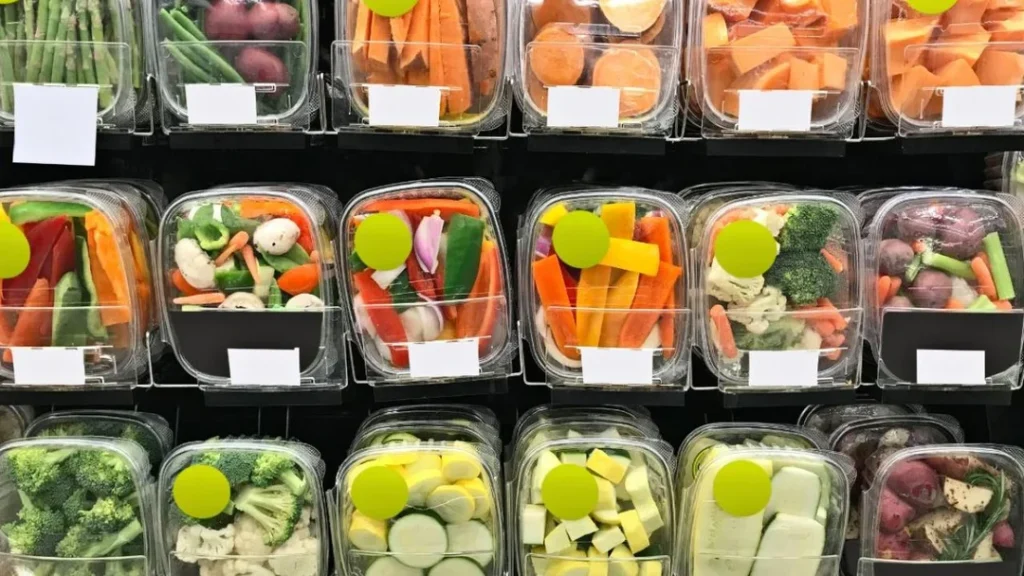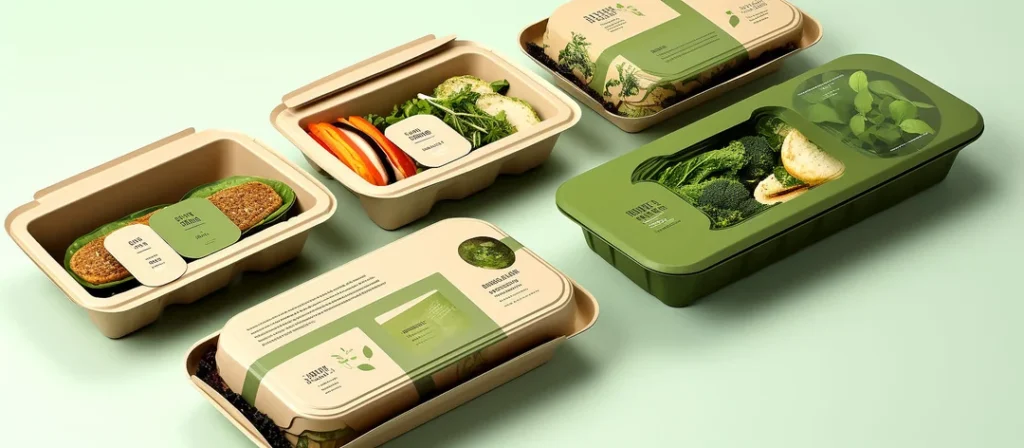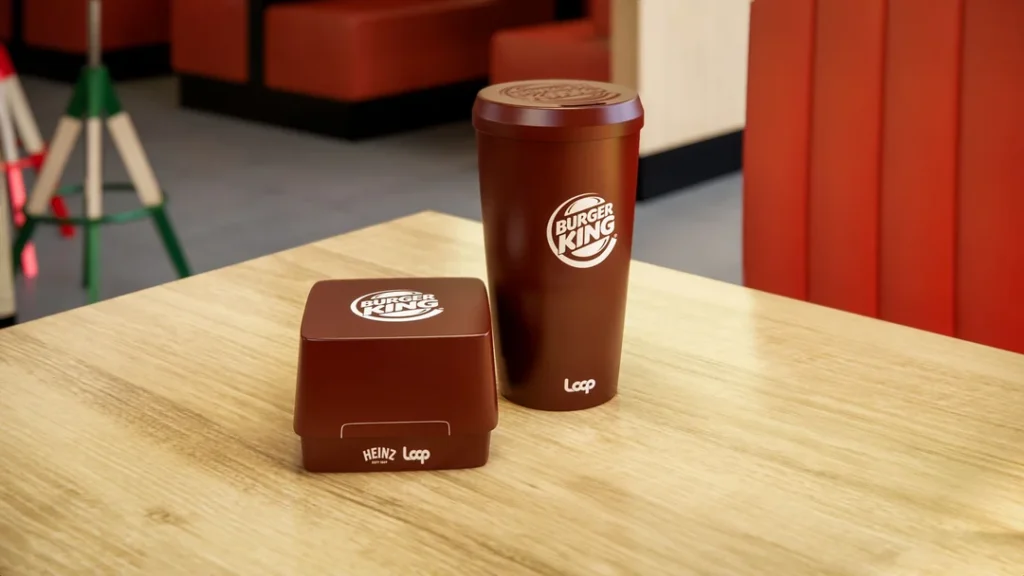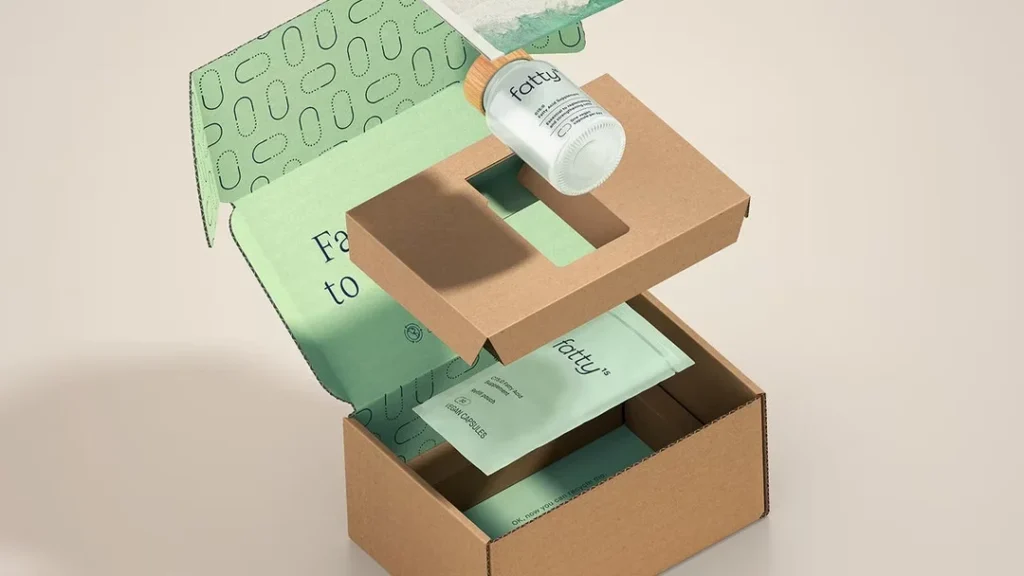Innovations in Reusable Packaging Design
Packaging waste is a massive problem. According to recent estimates, the world generates about 300 million tons of plastic waste annually. An enormous chunk of this waste comes from single-use plastic packaging discarded soon after use. However, in recent years, a growing consciousness around sustainability has led to the rise of reusable and refillable packaging solutions. Innovative product designers and packaging engineers are reimagining packaging systems to minimise waste. The reusable packaging revolution seems well and truly underway. But what exactly does the future look like regarding reusable packaging systems? Let's find out.
Table of Contents
Why We Need Alternatives to Single-Use Packaging

It's simple – our planet can no longer cope with the packaging waste we generate. Consider the following alarming facts about the impact of packaging waste:
Staggering Volumes End up in Landfills and Oceans
- 40% of plastic waste generated globally comes from packaging – this translates to nearly 150 million tons per year
- Packaging constitutes 65% of household waste in developed nations
- Every minute, the equivalent of a garbage truckload of plastic waste gets dumped into our oceans.
Most Packaging is Used Just Once Before Being Discarded
- 40% of the plastic produced goes towards packaging applications
- 50% of plastic packaging material is single-use – used for just a few seconds or minutes before being discarded
Recycling Rates are Abysmally Low for Plastic Packaging
- The recycling rate for plastic packaging hovers between 14-18%
- Certain types, like flexible plastic pouches, sachets, and multi-layer and multi-material packaging, are nearly impossible to recycle using standard methods.
The implications are staggering – we urgently need to reimagine packaging systems to reduce waste drastically. This is where reusable and refillable packaging solutions come into the spotlight.
What are the Key Benefits of Reusable Packaging?
Shifting from single-use disposable packaging to reusable alternatives offers several significant benefits:
1. Eliminate Waste & Pollution
- Reusables prevent waste from being created in the first place
- They eliminate product residue and packaging materials from ending up in landfills and water bodies
2. Save Resources and Energy
- Avoid resource and energy expenditure for constantly manufacturing new packaging
- Refilling reusables consumes less energy than recycling disposables
3. Lower Carbon Footprint
- Reusable systems have a 50-75% lower carbon footprint than single-use models
- Reduce carbon emissions from raw material extraction, production and transportation
4. Financial Savings
- Lower total packaging expenses for brands and consumers
- Brand owners save on packaging procurement and disposal costs
5. Improved Customer Loyalty & Brand Perception
- Sustainable packaging enhances customer affinity and brand image
- Refill/reuse models create opportunities to engage customers directly
Reusability also stimulates product innovation – designers must creatively re-envision packaging formats, delivery mechanisms and user experiences. The positives far outweigh the negatives. Small wonder that reusables present a $10+ billion global opportunity over the next five years.
Critical Principles for Creating Reusable Packaging

Designing reusable packaging systems requires fundamental shifts- from linear to circular approaches. Keeping certain principles in mind helps create effective reusables:
Prioritise Material Health
Choose durable, non-toxic and responsibly sourced materials that maintain integrity across reuse cycles. Avoid PVC, PVCs, PS, plexiglass and materials with added chemicals.
Design for Circularity
Adopt circular design strategies – make products modular, standardise components, and design out waste. Ensure packaging parts are reusable, recyclable or compostable.
Rethink Format & Function
Re-assess packaging purpose, format and functionality. Determine optimal durable material and construction for multi-use while preserving product quality across refill cycles.
Streamline Logistics
Design logistics networks supporting reusable transport, collection and cleaning—Optimise distribution models to reduce carbon footprint. Make take-back and reverse logistics efficient.
Incentivise Participation
Encourage user participation by making reusables convenient and rewarding. Provide incentives to ensure seamless user experiences.
These five tenets serve as a broad framework when engineering reusable packaging solutions. But what are some promising formats we can expect to see more of in the future?
Key Categories of Reusable Packaging Systems

Reusable packaging innovation is taking place across materials, formats and end-uses. Several canonical categories or archetypes are emerging across reusable packaging. Let's look at some of the important ones:
1. Refillable Containers
These are container packaging formats designed to transport or store products and get refilled multiple times while retaining shape and function. Strategies include:
- Reusable bottles: Refillable glass & plastic bottles for beverages, homecare etc. with15-50+ reuse cycles
- Reusable tubs: Durable containers with screw lids/stoppers for bulk grocery items, cosmetics etc.
- Reusable drums: Rigid containers made from stainless steel, plastic or fibre to store liquid foods, chemicals, etc.
- Intermediate bulk containers (IBC): Rugged, reusable industrial containers made from plastic or metal used for bulk transport and storage
2. Reusable Transport Packaging
Specialised reusable cases, crates and pallets used in retail and e-commerce supply chains:
- Plastic crates & pallets: Durable, nestable plastic crates and pallets optimise material and transport efficiency. Enable efficiencies in material handling.
- Reusable fabric systems: Flexible, reusable packaging is often made from recycled PET that can fold flat and is lighter than rigid plastic reusable.
- Reusable shipping containers: Containers and protective cases designed for efficient transport and storage during shipping parts and products, often made from engineered composites.
3. Refillable Dispensing Systems
Dispensing systems designed to enable refills of cleaning fluids, cosmetics and other liquid products into long-lasting, durable base containers:
- Refill stations: In-store and public refilling stations for cleaning supplies and beauty products, with users providing base container
- Reusable base + refill cartridges: Base container combined with refill cartridges/pouches. Base containers are reused, while refills are purchased periodically.
4. Reusable Food & Beverage Containers
Reusable vessels and dispensers for takeaway/on-the-go food and drink consumption:
- Reusable cups and mugs: Standardized cups with lids made from glass, ceramic, and engineered plastics are offered via closed-loop rental models via cafes, events, etc.
- Reusable food containers: Microwave-safe, modular containers with snap-shut lids for takeout meals and leftovers. Often offered via meal kit companies.
- Reusable cutlery: Portable, pocketable reusable cutlery sets often made from silicone, wood or bamboo offered via rental services in cities
As is evident, reusable packaging innovation occurs across diverse categories and end-uses. These systems present varied challenges and trade-offs that designers grapple with.
Key Trade-offs in Reusable Packaging Design
Creating adequate reusable packaging requires reconciling inevitable tensions and trade-offs:
User Convenience vs System Efficiency
- Reusables must be as convenient to adopt as single-use alternatives. But ultra-convenience often hinders eco-efficiency (e.g. single-serve coffee pods).
- Intelligent balancing is critical. Self-dispensing models (e.g. laundry detergent sheets, reusable squeeze pouches) can allow ease of use while eliminating single-use packaging.
Durability vs Environmental Impact
- Designing for longevity requires durable materials with a higher footprint than thin films and laminates.
- Lightweighting reusables via material innovations is essential
Standardisation vs Differentiation
- Standardising components across packaging systems aids in compatibility and recyclability.
- However, modularity and customisation allow for a closer fit with diverse application needs.
Hygiene vs Circularity
- Maintaining hygiene is non-negotiable, but disposable wipes/cleaners contaminate recycling streams.
- Strategies like reusable gloves, steam cleaning systems and antimicrobial coatings can address this.
In each case, smart design choices are vital to create the sweet spot, giving an optimal balance. As solutions evolve, tech innovations in materials, delivery formats and cleaning systems will be enablers.
Future Directions in Reusable Packaging Innovation

Reusable packaging is still at a nascent stage. While current efforts show promise, the solutions remain fragmented and small-scale. For reusables to become ubiquitous, certain advances are vital:
Advances in Smart Materials
Development of durable, safe and eco-friendly materials that maintain material properties and integrity across hundreds of reuse cycles
Connected Packaging
Leveraging IoT connectivity and geospatial intelligence for efficiency in reverse logistics, pick-ups, sorting, etc.
Decentralised Cleaning Infrastructures
Distributed cleaning systems and micro-factories for efficient sorting, cleaning and redistribution of reusable packaging containers
Transition Business Models
Product-as-a-service models that incentivise reuse while eliminating upfront ownership. Also, policy measures like packaging taxes, EPR mandates, etc.
Behavioural Design & Cultural Shifts
Improved product and service design for intuitive use while making reusables aspirational via marketing and communications outreach
As promising as the future seems, what are some unresolved questions regarding mainstreaming reusable packaging?
Open Questions Regarding Reusable Packaging
Despite the buzz around reusable and refillable packaging, unresolved barriers exist:
- Who pays for the increased upfront costs? Diffusion requires aligning incentives across the supply chain.
- Who is responsible for reverse logistics and material integrity over multiple reuse cycles?
- How do you efficiently integrate reusable transport packaging with existing infrastructure biased towards single-use?
- Will ultra-lightweight refills cannibalise reusables, i.e. actually reduce net reuse?
- How do we design universal, standardised components across proprietary packaged goods systems?
- Can reusable systems deliver equivalent product quality and convenience vs single-use?
- How do we seamlessly integrate reusable systems in retail environments dominated by disposable packaging?
Resolving these tensions requires coordinated efforts across stakeholders and business model innovations.
While reusable packaging is still an emerging trend globally, distinct pockets of leadership are emerging in parts of Europe and East Asia. Countries like Germany, Netherlands and South Korea are demonstrating leadership at a policy level and via industry initiatives around reuse.
The key takeaway is that no off-the-shelf solutions exist, and local contexts matter. The path to mainstream reuse will traverse many unique forks across product categories, cultures and geographies.
Reusables Go Mainstream – Imagine a Future Where Packaging Just Disappears!
Imagine walking into a supermarket and noticing something strange – the aisles seem empty, bereft of the colourful branded packaging we've grown accustomed to!
You pick up a stainless steel canister and fill it with concentrated oat milk dispensed from a refilling station. You fill your favourite cereal in a reusable container from a gravity-fed bulk dispenser. Your condiments and oils purchased in durable glass bottles get reused dozens of times before being industrially composted.
Your online shopping arrives in durable containers that are picked up, cleaned, and re-entered in the supply chain. Food takeouts land in sleek-looking stainless steel tiffins with premium finishes. Everything gets refilled in containers of all imaginable shapes, sizes and materials – but no single-use packaging in sight! And none of this feels like a compromise – it's all rather convenient!
This scenario may seem futuristic, but pilots and proof cases already exist. In the coming decade, reusable and refillable packaging will become mainstream, driven by regulation and the growing environmental consciousness of brands and consumers. Much work remains to align interests across sectors, streamline logistics and modify consumer behaviour at scale.
But we now know the future will have to be based on circularity. And a near-zero waste future isn't such a distant dream after all!
So next time you see innovative reusable packaging solutions emerge in your context, don't dismiss them offhand. We all have a pivotal role to play in this sustainability revolution. It's time to get ready for the circular packaging future awaiting us!
Frequently Asked Questions on Reusable Packaging
Aren't reusable packaging solutions too expensive?
Reusable packaging solutions involve higher upfront investments than single-use alternatives since they use more material to enable durability. However, they offer drastic savings in the total system-wide costs over the lifetime by reducing waste management, clean-up, and repeated procurement costs. Studies show 2-10X savings in lifecycle costs for businesses.
How do you maintain hygiene with reusable packaging?
Some ways to maintain hygiene include using durable materials resistant to scratches and cracks, which trap germs, modular container designs allowing different parts to be cleaned, effective cleaning procedures, antimicrobial coatings, and innovative sanitation methods using steam, UV light, etc.
How many reuse cycles are ideal for reusable packaging?
Ideally, packaging should be designed for at least 100 reuse cycles for the value proposition to make sense. However, the number varies considerably based on application between 10 to 1000+ reuse cycles. Material integrity is the key determinant.
What prevents the broader adoption of reusable packaging today?
The obstacles are more systemic rather than technical. Key barriers are high upfront costs, lack of reverse logistics infrastructure, inconvenience perceptions, and the incumbency of existing linear business models biased towards single-use packaging.
Which product categories show the most significant promise for reusable packaging?
Categories are conducive to reusable packaging and share traits like expensive packaged contents, high-frequency consumption leading to waste, delivery mechanisms compatible with existing reuse infrastructure, and highly involved users willing to alter behaviour.
